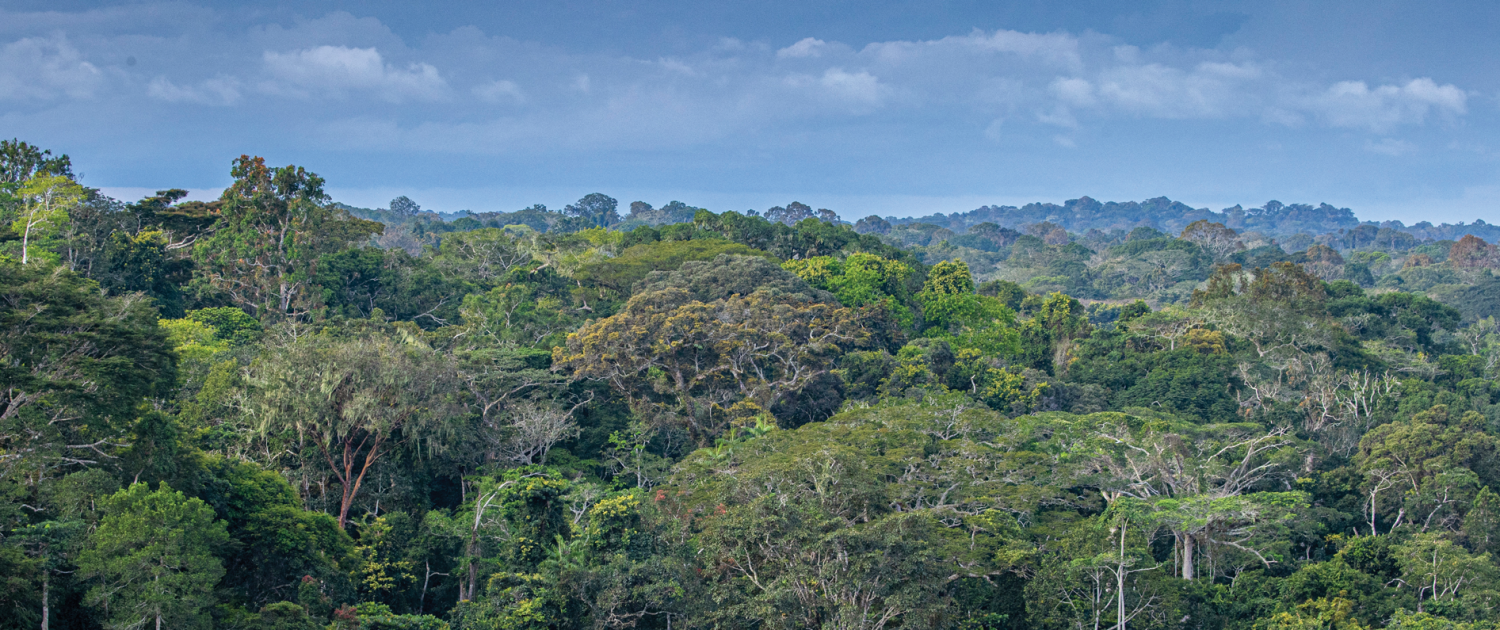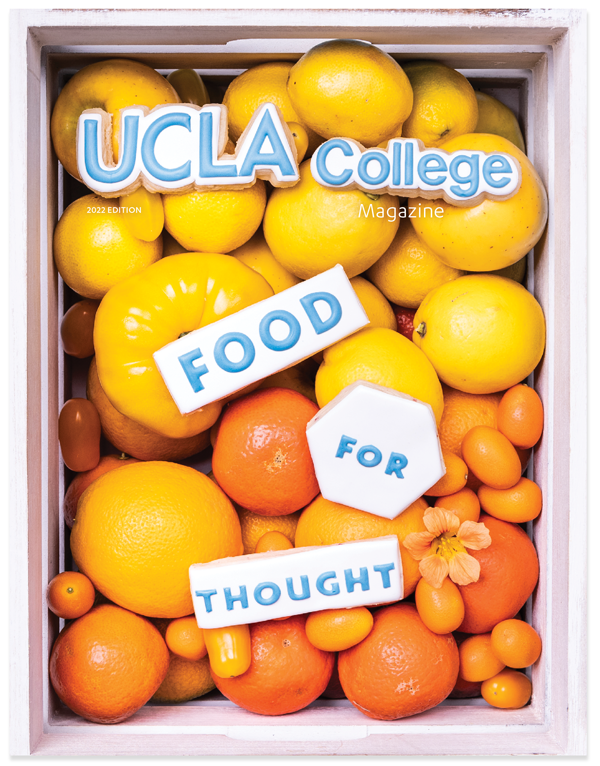SEEDS AND STARS
TAKING THE LONG VIEW TOWARD A BETTER FUTURE
BY JONATHAN RIGGS
Since its inception, the UCLA college has taken a thoughtful long view by investing in today’s projects that will pay off tomorrow — even if “tomorrow” arrives years into the future. Here are a few examples of the types of long-term investments that showcase bruins’ trademark patience, vision and foresight.
STRONG ROOTS
One of UCLA’s many far-sighted efforts seeks to prevent irreversible catastrophe in Central Africa. Home to the world’s largest rainforest still absorbing carbon, the Congo Basin is one of the planet’s two “lungs.” Containing approximately one of every five animal species, it faces grave threats, including climate change, exploitation of natural resources, poverty and disease.
To help solve these massive challenges, UCLA and the nonprofit International Institute of Tropical Agriculture launched the Congo Basin Institute in 2015. While it unites a global network of partners, CBI crucially supports African scientists with resources and funds for labs, research and graduate students, slowing “brain drain” and bolstering their role as the continent’s greatest change agents.
In one of its most impactful initiatives to date, CBI launched the Ebony Project with the support of Bob and Cindy Taylor (of Taylor Guitars) and the expertise of UCLA’s Thomas B. Smith, founding director of the Center for Tropical Research as well as a distinguished professor in the department of ecology and evolutionary biology.
Low numbers coupled with high demand have left tropical hardwood trees vulnerable. The project teams with communities to plant a combination of ebony trees and locally valuable fruit, medicinal and timber trees. The communities tend the trees and, for the first five years, receive stipends for this work. After the fifth year, the communities care for the trees independently and harvest the fruits and medicines to sell or use.
So far, 21,000 ebony trees and nearly 6,000 locally valuable fruit and medicinal trees have been planted — although ebony trees take up to 200 years to reach maturity. Because of the research and planting activities, ebony was moved from the “endangered” to the less critical “vulnerable” list, with thousands of additional saplings growing in project nurseries.
Closer to campus, UCLA is also laying careful groundwork as the first formal university partner of the newly formed Climate and Wildfire Institute. Although wildfires are a natural part of California’s ecosystems, they are burning with increasing frequency, ferocity and unpredictability due to climate change.
Key UCLA faculty leadership is involved: Alex Hall, a professor in the Department of Atmospheric and Oceanic Sciences and director of the Center for Climate Science at UCLA, serves as CWI’s inaugural secretary. The institute has also spurred serious conversations about establishing a major regional research hub at UCLA.
Among the center’s ambitious goals are developing a prediction system that continuously produces maps of future fire risks; building climate, ecological and fire models that reflect changing conditions; and incorporating the monitoring of harmful smoke emissions.
Although progress may be slow and measured, it’s necessary: 2020 was the most destructive wildfire season in California’s recorded history, with 4.4 million acres burned — more than 4% of the state’s land.
“A SOCIETY GROWS GREAT
WHEN ITS ELDERS PLANT TREES
IN WHOSE SHADE THEY KNOW
THEY SHALL NEVER SIT.”
—A PROVERB
GUIDING LIGHTS
Anyone who studies outer space must also be an expert in perseverance and patience. Both are required to access the best “seeing” into space on Earth: the twin Keck Observatory telescopes on Mauna Kea, Hawaii.
An application for telescope time allocation is required every six months, even for renowned 2020 Nobel laureate Andrea Ghez, UCLA’s Lauren B. Leichtman and Arthur E. Levine Professor of Astrophysics. In fact, it wasn’t until after 25 years of short-term allocations that Ghez was able to secure an unprecedented 10 years’ worth of telescope time — a show of faith in both her incredible science and the necessary time commitment to advance it.
Paving the way for Ghez and her generation of scientists was Margaret Kivelson, a UCLA distinguished professor emerita of space physics who delivered a talk at the April 22 celebration for the launch of the UCLA SPACE Institute. She joined UCLA’s faculty in 1967 as an assistant research geophysicist and spent most of her legendary career furthering exploration of Jupiter’s moons.
“That area of study goes back to 1610, when Galileo looked through his telescope and noticed two small dots going back and forth, night to night, on different sides of Jupiter,” Kivelson says. “He realized that they must be moons circling Jupiter the way the planets circle the sun in a heliocentric model of the solar system — and he got into a lot of trouble for it.”
Space missions to Jupiter began in the early 1970s, but it wasn’t until 1979 that the Voyager 1 and 2 spacecraft captured well-resolved photos of its many moons, and scientists realized their uniqueness.
Kivelson deepened her study of Jupiter with the aptly named Galileo mission, which began in 1976 and was scheduled to launch in 1985 before being postponed. The spacecraft took off in 1989; the commute to Jupiter was six additional years. And once it arrived, the only information captured came from a secondary antenna.
Even so, Kivelson and her team discovered more about four of Jupiter’s unique moons than was previously known, including evidence for the possibility of a salty ocean beneath Europa’s surface ice. Extensive follow-up missions are planned for the 2030s.
“We’re going to make measurements that will allow us to determine much more precisely what the ocean’s properties are, how deep it is buried, how deep it is,” Kivelson says. “We will be part of a team asking whether conditions on Europa could be hospitable to life. The answers are coming.”
Personally responsible for helping push science forward in ways even Galileo himself couldn’t have imagined, she marvels at what is to come.
“As someone who knows what it means to wait many, many years,” says Kivelson, “I learned that patience is a requirement for exploring the solar system.”




